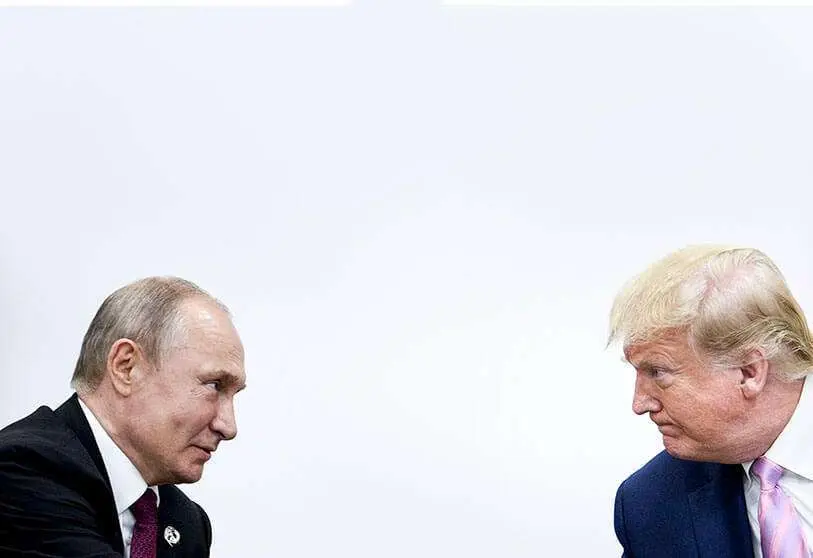No strategy without an enemy

The state of international politics is often analysed on the basis of its polarity, that is, according to which are the major poles of gravity that determine the dynamics of power in the world. These poles of gravity are usually formed by large blocs of countries and governments with similar interests, or with a similar ideological line. The global dynamics then depend on the rivalry between the great powers and, to a lesser extent, between their blocs. Thus, depending on the number of poles or powers that coexist in the world at a given time, we will find ourselves facing a unipolar, bipolar world, and so on.
This simple analysis with the focus on polarity has traditionally been important in the field of International Relations. Already in Ancient Greece the philosopher and military man Thucydides warned that when a powerful country tries to displace another, war is practically inevitable. This simple thesis is known as the Thucydides Trap, and is still present in global diplomacy today. It is true, however, that sometimes two great poles have coexisted without provoking a large-scale war. A clear and close example is the clearly bipolar world left by the Second World War. During the so-called Cold War, two radically opposed systems, the liberal and the communist, tried to secure an area of influence to defend their interests and even their own existence. Many of the conflicts of the second half of the 20th century were bipolar, although none of the wars (however bloody they were, such as the Vietnam War or the Korean War) went beyond the regional level.
If, in the middle of the Cold War, we asked several random passers-by on New York's Fifth Avenue what they thought was the greatest threat to the United States, it is almost certain that almost all of them would have answered the Soviet Union. And so it was: the foreign action of the United States was conditioned by the presence of the USSR. Whether in Latin America, the Middle East or Asia, American strategy was always determined by a desire to limit Soviet influence, a strategy that experts called containment. This meant acting to keep the interests of the Western bloc safe from Soviet interference, at virtually any cost.
The story of an expansionist USSR obsessed with ending US domination of the world contributed to a great deal of paranoia in Washington, which justified its military support for coups d'état (such as that of Iran in 1953 or Guatemala in 1954, both against democratically elected governments) on the pretext of preventing the USSR from expanding its scope of action.
In any case, the Soviet threat, whether exaggerated or real, gave clear meaning to the foreign policy of the United States and Western Europe. But in the 1990s the Soviet Union disintegrated, giving rise to a score of new republics and a weakened Russia. The Warsaw Pact vanished. The United States seemed to have triumphed over its red nemesis. The Thucydidian Trap had been fulfilled: one of the two great powers had prevailed over the other, even without a global war in between. The most optimistic considered the expansion of the capitalist system and democratic values inevitable: history was about to leave behind the bipolar system that had reigned for half a century. This is what political scientist Francis Fukuyama called the End of History in his 1992 book of the same name: the globalization of democracy and liberalism seemed inevitable.
Three decades have passed since then, and anyone who takes a look at the latest world news will realize that those messages of optimism did not estimate the magnitude of the threats against the liberal system. Few countries outside Europe have gone from being dictatorships to democracies; international organizations such as the European Union have very limited power to act; historically unstable regions (such as the Middle East) are probably even more chaotic than they were thirty years ago; civil wars and failed states are still sadly commonplace.
But there is one crucial difference from the Cold War: the absence of a clear rival, of a bloc to take the place of the USSR. So if we were to ask the passers-by on Fifth Avenue today what is the greatest threat to the United States, what would they say? Is Iran a real threat to the United States? Is the Western world in a war against jihadist terrorism? Is Putin's aggressive Russia a rival comparable to the USSR of old? And what about China, the new trading power? Is India a rival or an ally?
Indeed, the world is now multipolar. Although the United States is probably still the country with the most global influence, there are a myriad of new players to deal with. When foreign policy was determined by a single great enemy, it made sense to pursue a strategy aimed at containing the potential Soviet danger. But in recent decades Western foreign policy has been erratic, with different strategies succeeding each other. Not having a single clear rival makes the foreign action of the Western bloc extremely difficult, if such a bloc can still be said to exist. The world is extremely complex, and there is no single recipe that can effectively address each of the challenges. The triumph of the liberal system that many predicted after the fall of the Berlin Wall now seems little less than a dream.
